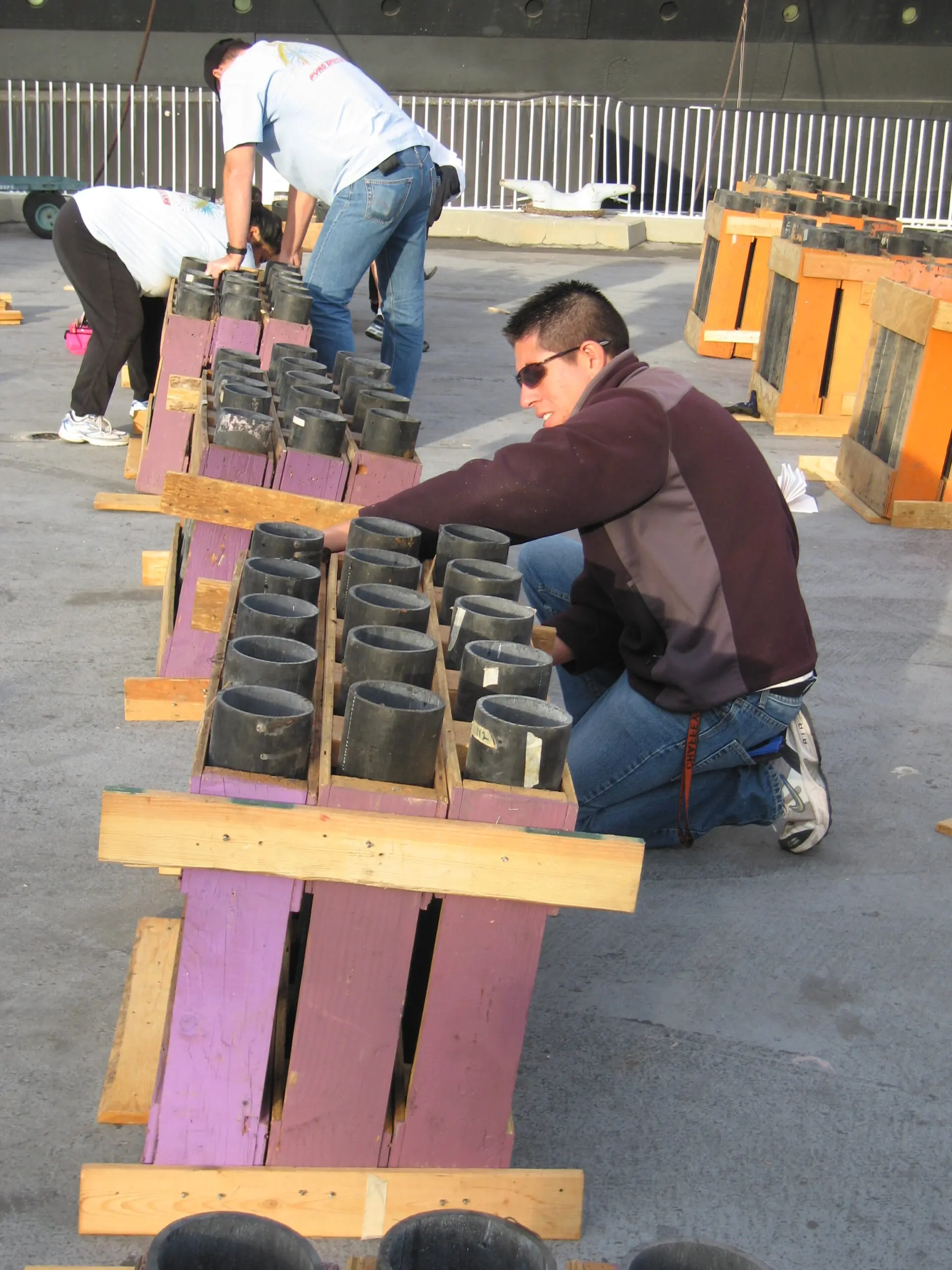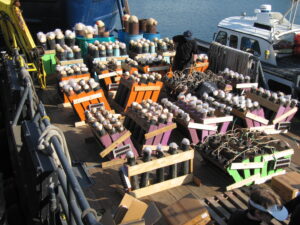Take me back to what to know your first fireworks show
Fireworks Racks
What is a fireworks rack?
A fireworks rack contains a given number of aerial mortar tubes (aka “guns”) of a given size. The racks are constructed from wood. The mortars are typically constructed out of one of four materials, namely HDPE (High-Density PolyEthylene), fiberglass, paper, or steel. HDPE is the most common. Racks can only contain paper or HDPE tubes. Steel tubes must be buried 2/3 of their length. HDPE is used instead of say PVC or ABS due to its special energy absorption properties. The energy from a tube detonation goes into expanding and splitting the HDPE material, in contrast to PVC which would splinter and fragment throwing shrapnel and therefore be unsafe to use unburied in a rack.
The number of mortars per rack and total weight depends on the size (diameter) of the gun. Each rack has only one mortar size. Here is a table for rack size and weight for HDPE mortars:

Building Fireworks Racks
We secure racks by “cleating” them together. What the heck is cleating?! It’s quite simple actually. It involves taking a few pieces of wood (cleats) and nailing them to the racks. The name of the game is to make the racks stable. Watch one of our videos of fireworks mortars firing during a show, a finale in particular, you can see it’s extremely violent. So your cleating job has to ensure that the racks will not tip over or come apart while they’re jumping around. If your cleating an individual rack, or even two of them together, you will take one cleat across the bottom of the rack, making sure it is sitting firmly on the ground, and place two nails (in each rack if more than one are being cleated together) and then one cleat across the top (if more than one are being put together), with one nail in each rack. So, two nails in the bottom of each rack and one in the top of each rack. We use duplex nails (nails with two heads) so that we can pull the nails out with ease at the end of the show during cleanup. Finale racks are slightly different since they are usually cleated together at an angle (like a fan) so that you get a good spread and fill the whole sky. The same cleating method applies (two nails in the bottom, one in the top), with the one difference of fanning.
How to Build Fireworks Racks
Building Finale Racks
Cleaning Fireworks Mortars
- Setup at a Country Club
- Fireworks racks ready to load





